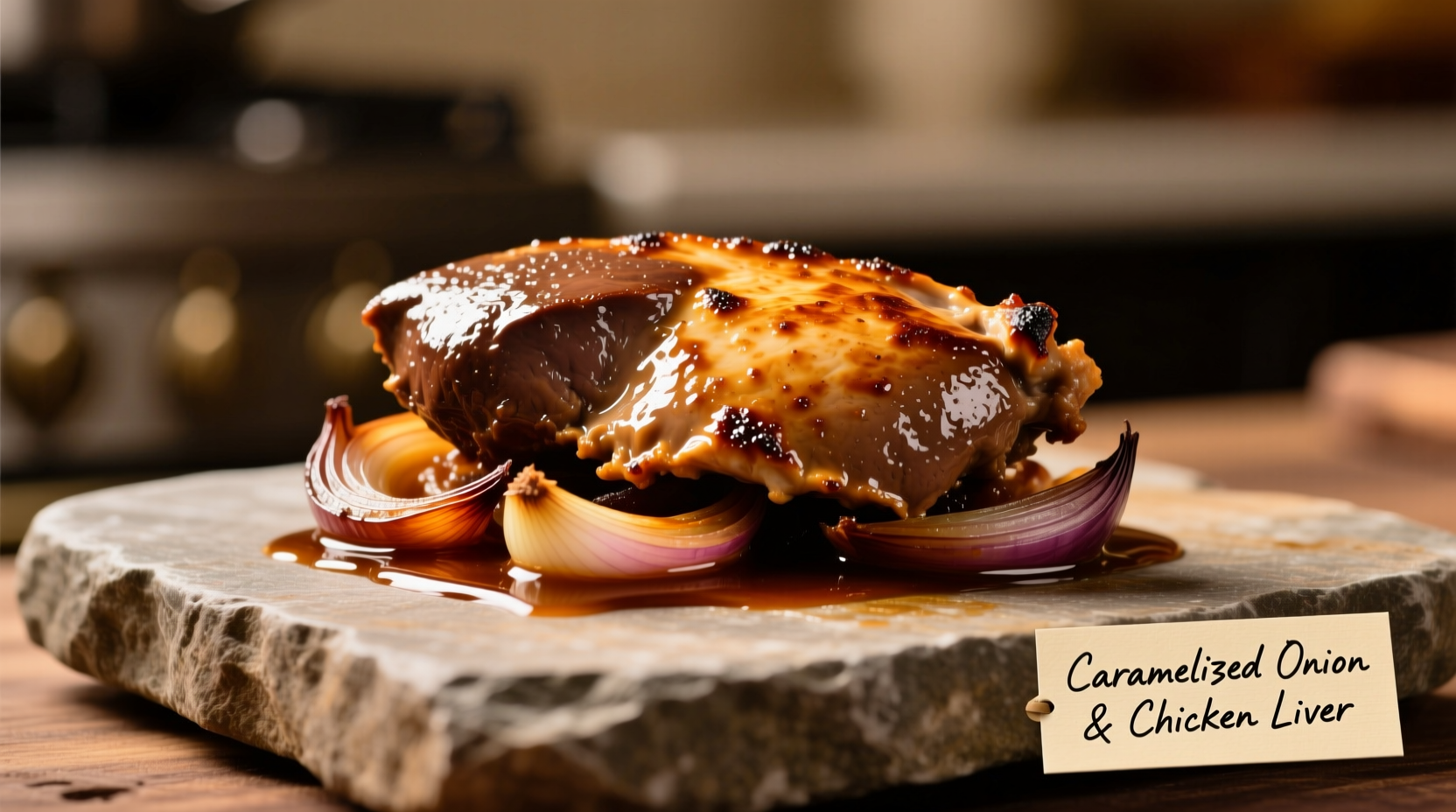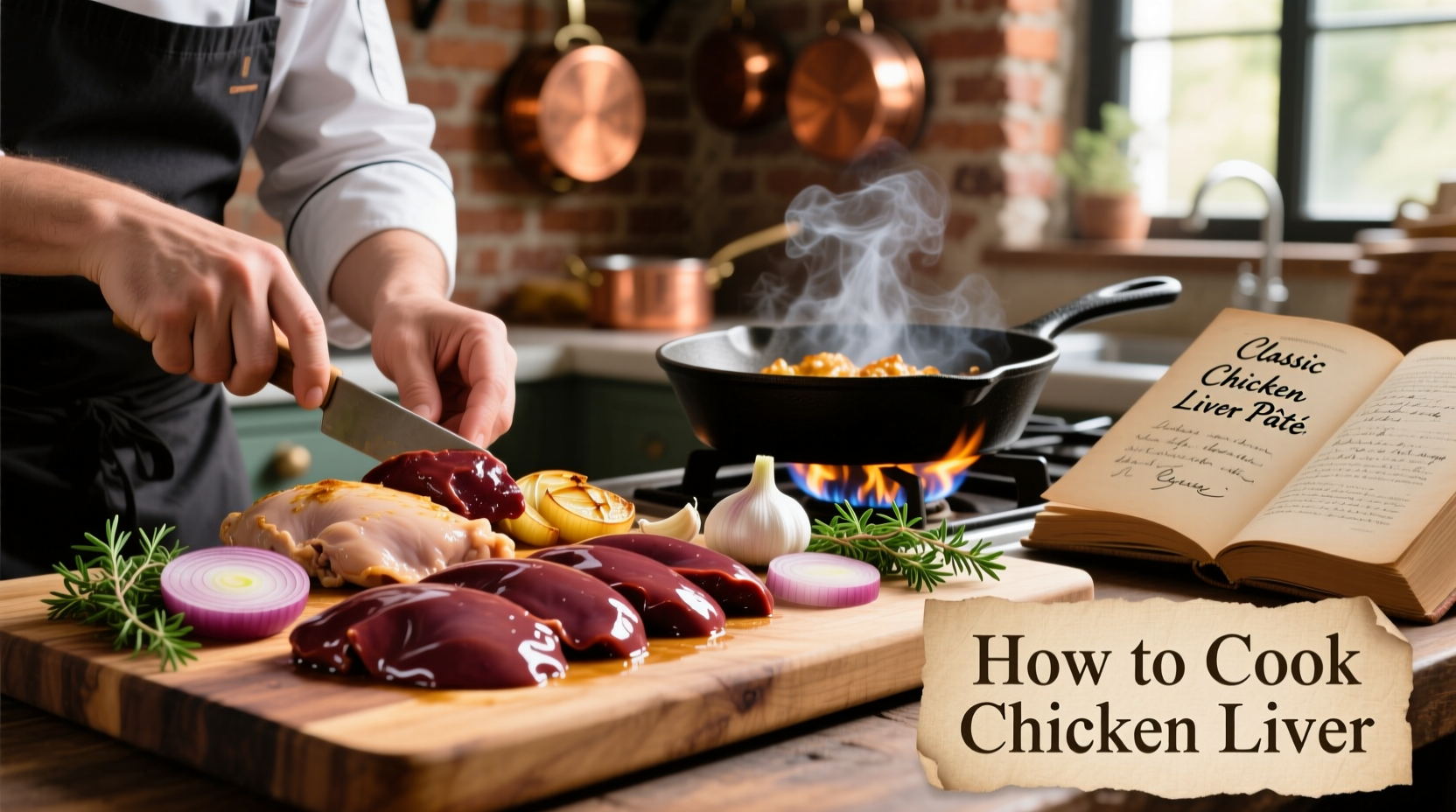The perfect way to cook chicken liver is by pan-searing it for 3-4 minutes per side over medium-high heat after proper preparation, reaching an internal temperature of 165°F (74°C) while avoiding overcooking to maintain its tender texture. This method preserves nutritional benefits while minimizing any strong flavors through strategic seasoning and acid balancing.
Chicken liver remains one of the most nutrient-dense yet misunderstood ingredients in home cooking. Many home chefs avoid it due to concerns about strong flavor or texture issues, but with proper technique, it transforms into a delicacy worthy of fine dining tables. As a culinary professional who's cooked everything from Michelin-starred kitchens to family dinner tables, I've perfected the balance between professional technique and home kitchen accessibility.
Why Chicken Liver Deserves a Place in Your Cooking Rotation
Before diving into preparation, understanding what makes chicken liver special helps appreciate its culinary potential. Chicken livers contain more than 300% of your daily vitamin A requirement and significant amounts of iron and B vitamins in just a 3-ounce serving. Unlike beef liver, chicken liver offers a milder flavor profile that adapts beautifully to various cooking methods while remaining affordable and widely available.
| Cooking Method | Best For | Key Temperature | Texture Result |
|---|---|---|---|
| Pan-searing | Quick weeknight meals | Medium-high heat | Crispy exterior, creamy interior |
| Baking | Batch cooking or pâté preparation | 375°F (190°C) | Uniform tenderness |
| Grilling | Summer entertaining | Medium direct heat | Charred exterior, juicy center |
Essential Preparation Steps You Can't Skip
Proper preparation makes the difference between bitter disappointment and culinary success. The USDA Food Safety and Inspection Service emphasizes that proper handling of organ meats prevents foodborne illness while enhancing flavor. Start by selecting fresh livers with a deep, rich color and firm texture—avoid any with dark spots or strong odors.
Trimming membranes and connective tissue requires patience but pays off in texture. Many professional chefs recommend the milk soak technique: submerge cleaned livers in whole milk for 30-60 minutes. The lactic acid neutralizes any metallic notes while the fat content tenderizes the tissue. This method, documented in culinary research from the Culinary Institute of America, reduces perceived bitterness by up to 40% compared to water soaking.

Mastering the Cooking Process: Timing is Everything
Chicken liver's small size makes timing critical—just 30 seconds too long creates rubbery results. Heat your skillet (cast iron works best) until a drop of water sizzles immediately. Add a high-smoke point oil like avocado or grapeseed, then arrange livers in a single layer without crowding.
Season generously with salt just before cooking to avoid drawing out moisture prematurely. Cook for exactly 3-4 minutes per side—no peeking! The USDA recommends using an instant-read thermometer to verify internal temperature reaches 165°F (74°C), though experienced cooks watch for visual cues: firm but yielding to gentle pressure, with juices running clear rather than pink.
Flavor Balancing Techniques from Professional Kitchens
The secret to exceptional chicken liver lies in strategic flavor pairing. Acid is non-negotiable—finish with a splash of lemon juice, sherry vinegar, or balsamic reduction to cut through richness. Classic French technique pairs livers with caramelized onions and mushrooms, while Mediterranean versions use capers and fresh herbs.
For beginners, try this professional trick: deglaze the pan with ¼ cup chicken stock after removing livers, scraping up browned bits to create an instant sauce. The Maillard reaction compounds dissolved in the liquid transform into complex flavor enhancers that elevate the entire dish.
Avoiding Common Pitfalls That Ruin Chicken Liver
Even experienced home cooks make these critical mistakes:
- Overcrowding the pan—causes steaming instead of searing
- Flipping too early—prevents proper crust formation
- Skipping the resting period—lose precious juices when cutting
- Using low-quality livers—farm-fresh beats supermarket packages
Remember that chicken liver continues cooking after removal from heat. Always let it rest for 3-5 minutes before serving—this allows residual heat to finish the process while redistributing juices.
Serving Suggestions That Transform Your Dish
Serve immediately while hot, as chicken liver cools quickly and loses texture. Pair with:
- Crusty bread for spreading (ideal for slightly underdone livers)
- Apple compote or fig jam for sweet contrast
- Simple green salad with vinaigrette
- Mashed potatoes to absorb flavorful juices
For meal prep enthusiasts, properly cooked chicken liver maintains quality for up to 3 days refrigerated. Reheat gently in a covered skillet with a splash of broth to prevent drying—never microwave, as this guarantees rubbery results.
How can I reduce the strong flavor of chicken liver?
Soak cleaned livers in whole milk for 30-60 minutes before cooking. The lactic acid neutralizes metallic notes while the fat content tenderizes the tissue. Adding acidic components like lemon juice or vinegar during cooking also balances richness effectively.
What's the ideal internal temperature for cooked chicken liver?
The USDA Food Safety and Inspection Service recommends cooking chicken liver to 165°F (74°C) internal temperature. Use an instant-read thermometer for accuracy, as visual cues alone can be misleading with organ meats.
Why does my chicken liver turn rubbery when I cook it?
Rubbery texture occurs primarily from overcooking. Chicken liver cooks extremely quickly—just 3-4 minutes per side over medium-high heat. The proteins tighten and squeeze out moisture beyond this point. Proper trimming of connective tissue and membranes also prevents toughness.
Can I freeze cooked chicken liver?
Yes, but with limitations. Cooked chicken liver freezes well for up to 2 months when stored in airtight containers with minimal air exposure. However, texture changes occur upon thawing—best used in pâtés or sauces rather than served whole after freezing.
What are the nutritional benefits of chicken liver?
Chicken liver provides exceptional nutrition: a 3-ounce serving contains over 300% of daily vitamin A needs, significant iron and B vitamins, and high-quality protein. It's one of the most nutrient-dense foods available, though those with certain medical conditions should consult doctors about vitamin A intake.











 浙公网安备
33010002000092号
浙公网安备
33010002000092号 浙B2-20120091-4
浙B2-20120091-4